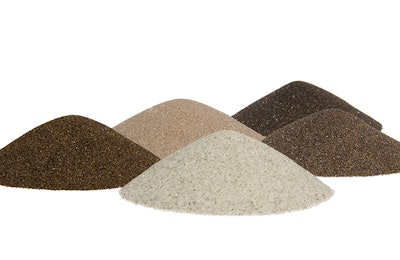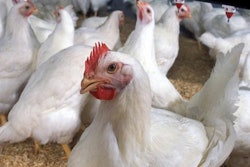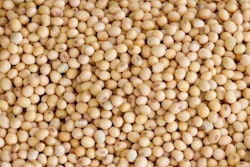
Monogastric animals, like pigs and poultry, do not care about how much iron we incorporate into their feeds. In fact, they can tolerate wide excesses, whereas natural ingredients contain almost enough to allow them to live at an acceptable, albeit not profitable, condition. However, we should be quite vigilant about iron in feeds. There are certain conditions — for example, using exotic ingredients — that could exacerbate a marginal iron deficiency. Or, as another example, when too much iron from using the wrong phosphate salt could provide a surplus of iron that causes gut Escherichia coli to proliferate at an excessive rate.
It is imperative to consider all aspects of iron nutrition.
Traditionally, nutritionists have relied on a trace mineral premix to cover the needs for iron, almost invariably, with a generous margin over requirements. Today, this is no longer considered as good enough. First, because we know better, and second, because we must ensure animals receive only as much iron as they need and no more or less. In addition, it is not sufficient to determine an absolute concentration of iron supplementation, say 100 ppm, from the premix. We must know how much of this amount actually becomes available to the animal. In other words, we must understand and take into account the factors affecting iron availability:
- Iron source
Iron sulphate is considered as the golden standard in iron relative bioavailability studies, given an arbitral value of 100 percent. This does not mean iron in iron sulphate is 100 percent digestible or available to the animal, leaving no iron to escape the animal. It only means that what iron the animal actually used, this unknown amount, is given a value of 100 percent, against which all other forms of iron are compared with — hence the term relative. For example, iron carbonate has a relative bioavailability value (RBV) ranging between 2 and 101 percent. This means it can be virtually useless or as good as iron sulphate. There are tables available providing exact values for each iron source, but as it happens, quality within each source can also affect RBV, as seen in the case of carbonate above.
- Organic versus inorganic
In general, there is a notion that organic forms are more available than inorganic ones. Whereas this might be the case for certain forms or even products, it is an erroneous guideline and should be abandoned. Indeed, RBV in organic sources of iron, or any other trace mineral, can be as low or high and equally as variable between and within forms and sources, as that observed in inorganic iron sources. In essence, we must evaluate each source on an individual (product) basis, and not based on its name or origin.
- Phytate
Iron in the phytate molecule is unavailable unless it is released by the action of the enzyme phytase. Otherwise, phytate does not appear to affect the bioavailability of iron in pigs and poultry. Studies that showed the opposite were conducted with rats, which have a completely different digestive process and, as such, results are not always applicable to other species. In addition, several studies that involved soybean meal and phytate in relationship to iron absorption indicated that soy protein isolate may possibly bind iron to the detriment of the animal, but soy protein concentrate does not act in this way; this is explained by the alcohol extraction step used in the production of the isolate.
- Citric acid and vitamin C
Citrate and ascorbate have been shown to improve iron absorption as they reduce and chelate non-heme iron — like iron from non-animal-derived sources (most iron in animal products is highly available to begin with). It is also believed that the reduction of stomach pH by the use of these two acids contributes to increased iron absorption, which diminishes as pH becomes alkaline.
- Pectins
Pectins, a family of water-soluble fibers, are considered as detrimental to iron absorption. The thinking behind this notion is that pectins, which form a gel in the gut, may trap iron, preventing its absorption. In fact, studies have demonstrated that pectins actually improve iron absorption, perhaps because this family of functional fibers improves gut water regulation.
- Feed protein
In general, low protein diets will reduce iron absorption because some amino acids (cycteine, lysine) chelate with non-heme iron. Again, results were observed mostly with rats.
- Other minerals
Excess levels of calcium, phosphorus, magnesium, zinc and copper are all detrimental in the utilization of feed iron. Calcium is usually in excess of requirements because of its relatively low cost, whereas in some diets (layer hens) it is found in very elevated concentrations (4 percent). Zinc and copper sources are often used in antibiotic-free programs, and they may interfere with iron absorption. Luckily, in the same programs, organic acids such as citric acid are used, counterbalancing the above negative effect.
Considering all aspects
It is imperative to consider all aspects of iron nutrition, starting from the label of the premix we use and continuing investigating even less well-known sides that reach inside common ingredients. Iron is an essential nutrient, but it must be controlled as it can predispose certain classes of animals to health problems when either in deficiency or in excess, and either condition has to do equally with iron concentration and its relative bioavailability.
Read more: Mineral relative bioavailability misconceptions explained

















